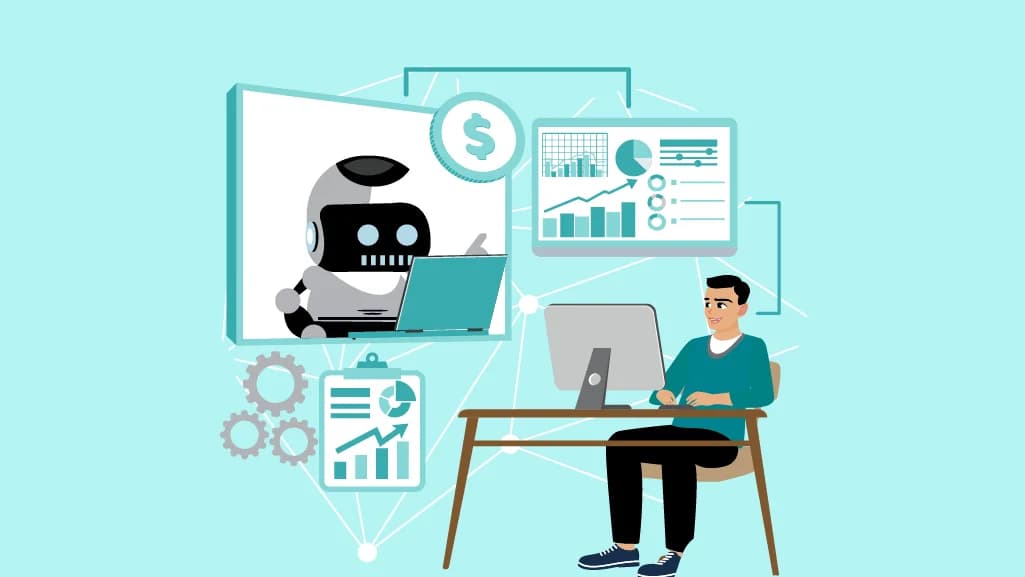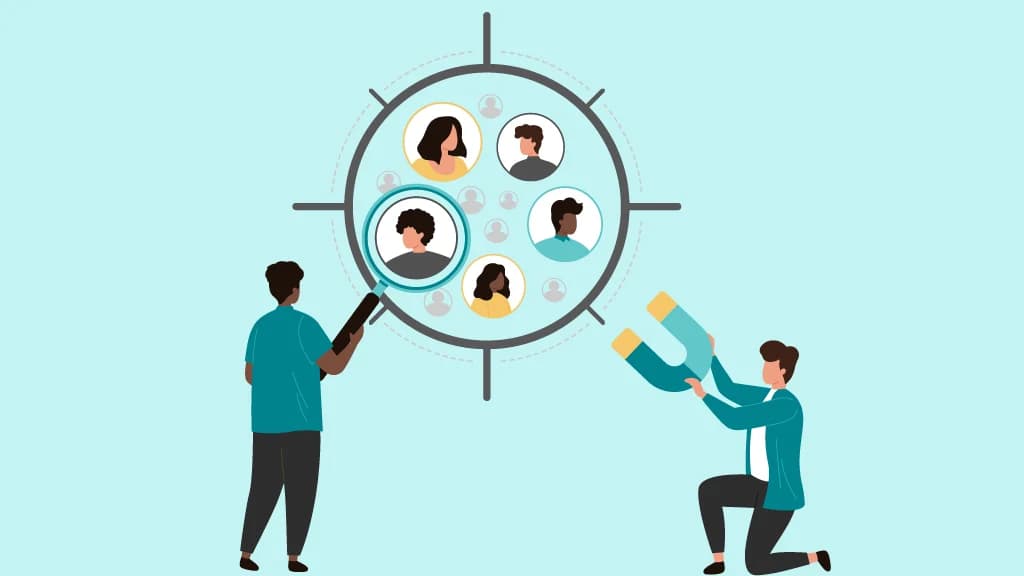
Workplaces are changing fast. Companies are now moving beyond simple automation and rule-based tools. They are investing in agentic AI, intelligent AI agents that can think, act, and learn on their own.
For HR leaders, this shift is important. Agentic AI promises better employee engagement, smarter rewards, and a culture that can adapt to change. As organizations become more flexible and fast-moving, knowing what agentic AI means and how it works is becoming essential.
Agentic AI is a type of artificial intelligence built around “agency”. This means the AI can make decisions independently and adjust based on new information.
Unlike traditional automation, which only reacts to commands, agentic AI can:
- Understand what is happening
- Set goals
- Choose the next steps
- Improve its actions over time
Think of it like going from a machine that waits for instructions → to a digital teammate that takes initiative.
Because of these abilities, more business leaders are exploring agentic AI for modern work, including recognition, rewards, and workflow improvements. These AI agents are designed to sense, reason, learn, and orchestrate actions across systems, opening new possibilities for how organizations operate.
What is Agentic AI?
At its core, agentic AI is about giving software the ability to think and act on its own. Instead of waiting for instructions, these AI agents behave more like proactive partners. They can understand what’s happening around them, make decisions, plan actions, and work toward specific goals.
What makes agentic AI powerful is not just performance; it’s autonomy, adaptability, and collaboration. These are the same qualities HR teams need today to improve recognition, engagement, and employee retention.
An AI agent is any digital system that can:
- Notice and understand information
- Reason and make smart decisions
- Learn and adjust based on results
- Carry out tasks independently
Some solutions use a single AI agent, while others use multiple agents working together to handle larger challenges. For example, several AI agents can coordinate to boost employee engagement or manage organization-wide recognition programs, without constant human support.
In simple terms:
Agentic AI turns technology into a self-driven helper that can support HR teams and the wider organization every day.
Key Characteristics of Agentic AI Systems
Agentic AI is different from regular automation because it doesn’t need constant instructions. It has a few powerful qualities that make it especially useful at work:
- Proactive: Agentic AI can spot needs and risks early. It doesn’t wait for a manager to tell it what to do. Instead, it analyzes what’s happening and takes action on its own. For example, if engagement drops in a team, the system might trigger recognition or wellness support before problems grow. This helps keep employees motivated and connected.
- Autonomous: These AI agents can make decisions and act independently. They think through a situation, choose the best approach, and execute tasks, all with minimal human involvement. This frees HR teams from manual work and allows them to focus on bigger strategies, while the AI handles timely actions like recognition reminders or retention-focused nudges.
- Adaptive and Learning-Oriented: Agentic AI doesn’t stick to one way of working. It learns from feedback and what’s happening in the real world. When an employee’s needs or business goals change, the system automatically adjusts its approach. This means HR can keep engagement strategies fresh and relevant, even when employee mood or company goals shift over time.
- Goal-Driven and Task-Oriented: These AI agents follow clear goals, like improving engagement scores or boosting recognition participation. They break big objectives into simple tasks and track progress as they go. For example, an agent can plan and run targeted recognition campaigns for teams that need the most motivation. This ensures every action leads to a measurable outcome.
- Collaborative (Multi-Agent Capability): Agentic AI doesn’t work alone. It can coordinate with other agents and with people, sharing information and solving problems together. This teamwork supports cross-department engagement, helping recognition, wellness, and retention efforts stay aligned as the organization evolves.
AdvantageClub.ai’s recognition engine uses these agentic capabilities to stay in tune with employee needs. As engagement levels or sentiment change, the system automatically adjusts workflows. This ensures every reward or recognition feels timely, meaningful, and truly appreciated by the employee receiving it.
How Agentic AI Differs from Conventional AI
| Aspect | Traditional AI | Generative AI | Agentic AI |
|---|---|---|---|
| Primary Function | Executes pre-defined rules | Creates new solutions or content from learned data | Perceives, reasons, plans, and acts to achieve goals |
| Human Input | Requires frequent commands | Needs prompts to generate outcomes | Self-directed, requires minimal ongoing input |
| Adaptability | Limited flexibility beyond training | Adapts contextually within user-driven boundaries | Continuously learns and adapts from feedback and data |
| Decision- Making | Reactive, rule-based | Creative, contextual | Proactive, autonomous, outcome-driven |
| Scope of Action | Narrow, specific to initial programming | Broad generation but not strategy | Dynamic, cross-functional, collaborative, orchestrated |
Agentic AI helps close the gap between basic automation and real teamwork. It allows HR leaders to automate repetitive tasks while focusing more on culture-building and people-first initiatives. With coordinated AI agents working together, platforms can smoothly go from recognizing employee effort to recommending the right rewards or retention actions, all without manual intervention.
How Agentic AI Works
Agentic AI follows a repeated cycle of learning and improvement, making sure every action stays aligned with organizational goals and real-world needs:
- Perception: The system actively “listens” for changes by gathering signals from business tools, employee feedback, and other data sources. It notices patterns that may show shifting priorities or new workforce needs.
- Reasoning: Once data is collected, AI agents study the patterns, uncover challenges, and evaluate different options. They don’t just react, they understand the context behind what’s happening.
- Goal Setting: Using what it learns, the AI sets clear goals that align with HR priorities or the business mission. This ensures every action supports long-term engagement and organizational success.
- Decision-Making and Planning: Agentic AI creates detailed action plans by comparing options and predicting outcomes. This step ensures decisions are thoughtful, not rushed or based on assumptions.
- Execution: The AI puts the plans into action, such as sending recognition to employees, adjusting rewards, or improving workflows, without needing constant human supervision.
- Learning and Adaptation: After actions are taken, results are tracked. The system learns from outcomes and feedback, updating future plans to improve engagement over time.
- Orchestration: In systems with multiple agents, each agent coordinates with others. They share information and align strategies so employee engagement feels consistent across the organization.
Types of Agentic AI Systems
Agentic AI systems can be designed in different ways depending on the goals and level of complexity needed:
Single-Agent Systems:
- These systems handle one task or workflow at a time, such as automatically sending reminders for employee surveys or tracking completion of training modules.
- They work best when goals are specific and well-defined, allowing the AI to learn deeply in one focused area and improve performance within that space.
Multi-Agent Systems:
- In these systems, multiple AI agents team up to solve broader, cross-department challenges. They can communicate, share insights, and coordinate actions to support engagement and recognition across the organization.
- This model is especially valuable for large-scale initiatives like enterprise-wide incentives, predictive analytics, and retention strategies, where collaboration and orchestration deliver stronger outcomes.
Benefits of Agentic AI
Agentic AI is already helping forward-thinking companies achieve real results at work. It makes everyday processes smarter while ensuring employees feel valued and supported. Here’s how it helps:
- Enhanced Efficiency and Productivity: Agentic AI takes over repetitive tasks and routine decisions so HR teams don’t get stuck in daily busywork. Instead, they can spend more time on people-focused activities, such as coaching and employee well-being. By reducing manual effort, organizations move faster and get more done with the same team.
- Continuous Improvement and Adaptability: These AI agents are always learning. They watch how employees engage, what changes are happening, and what isn’t working anymore. Then they automatically adjust workflows to align with new business goals or employee needs. This constant learning helps companies stay aligned with a changing workplace instead of falling behind.
- Increased User Trust and Reliability: Because decisions are based on real data rather than assumptions, people feel safer with the recommendations they receive. When employees understand why they are rewarded or recognized, they believe the process is fair. That trust builds confidence in the system and in leadership decisions.
- Human Augmentation: Agentic AI doesn’t replace leaders, it supports them. It reads employee sentiment, highlights concerns early, and suggests the best recognition actions. This helps HR leaders make thoughtful decisions that feel personal and human while relying on strong AI insights in the background.
- Proactive Problem Solving: Agentic AI can spot early signs of disengagement or stress and step in before issues grow bigger. It recommends recognition or wellness actions at the right time, helping teams stay motivated, healthy, and connected. Preventing problems leads to higher retention and stronger morale overall.
Platforms like AdvantageClub.ai use a multi-agent approach to connect recognition data, automate appreciation, and personalize rewards. That means every employee receives attention that feels timely, relevant, and genuine in real time.
Real-World Use Cases and Applications
Agentic AI is already transforming important business operations across industries. Instead of waiting for instructions, these AI agents take action on their own, helping teams work faster, smarter, and with less manual effort. Here are some practical examples of how it’s used today:
- Software Development: Autonomous AI agents can review code, run tests, catch bugs, and suggest improvements based on proven best practices. This means developers spend less time on routine checks and more time building new ideas. As a result, software projects move faster and product quality improves.
- Incident Response Automation: IT teams rely on agentic AI to monitor systems in the background. When something goes wrong, the AI flags the issue, assigns the right ticket, and can even resolve common problems automatically. This reduces downtime and helps keep services reliable around the clock.
- Customer Service Automation: Conversational AI agents understand what customers ask for, adjust to the situation, and provide quick, helpful responses. They can handle simple questions instantly or guide users to the best support option, improving service speed and satisfaction.
- Research and Data Analysis: In HR and business operations, agentic AI organizes and examines large amounts of data that humans don’t have time to sort through manually. It highlights useful patterns and insights that help managers improve engagement, performance, and reward decisions.
- Operations and Workflow Orchestration: When multiple AI agents work together, they can coordinate recognition programs, wellness efforts, approvals, and feedback across different teams. This creates smooth workflows and a more connected employee experience throughout the company.
Platforms like AdvantageClub.ai bring these capabilities together. Their agentic AI systems automate recognition journeys, detect disengagement early, and improve employee well-being in real time, without adding work for HR teams.
Challenges and Risks of Agentic AI
Agentic AI offers major advantages, but HR and business leaders must understand the hurdles that come with it. These systems require careful planning, testing, and communication to work safely and effectively. Here are the key considerations to keep in mind:
- Design Complexity: Building advanced AI that can learn, adapt, and make decisions requires strong business rules, accurate data, and continuous testing. Teams must be ready to manage change as the system evolves.
- Transparency & Trust: When AI acts independently, employees need to understand how and why decisions are being made. Clear communication builds trust and prevents fear or confusion around automated actions.
- Debugging & Testing: Because agentic AI keeps learning new behaviors, traditional QA doesn’t always apply. Organizations must create reliable testing methods to measure learning accuracy and ensure that behavior remains aligned with company values.
- Data Security & Ethics: These systems often handle private information like employee feedback, performance markers, or wellness data. Strong privacy protections, compliance controls, and ethical guidelines are essential from day one.
- Integration: Connecting agentic AI with existing HR tools, workflows, and legacy platforms can take time, planning, and investment. A phased rollout helps reduce disruption and build confidence in the technology.
Proactive planning, regular audits, and transparent communication ensure companies unlock the full benefits of agentic AI while keeping the employee experience safe, fair, and compliant.
Integration Considerations for Organizations
Rolling out agentic AI works best when grounded in a clear strategy and honest communication. Organizations should begin with small steps, automating simple HR workflows, running pilot programs, and using engagement analytics, then expand as trust and confidence grow. Key priorities include:
- Strong data foundations: Make sure data is clean, secure, and ready for AI-driven decisions so outcomes stay accurate and reliable.
- Governance and visibility: Give leaders transparency into how AI makes choices to maintain credibility and accountability.
- Clear communication: Help employees understand what the AI does, why it matters, and how it supports them, not replaces them.
- Cross-functional pilots: Test early with different teams, measure the impact on engagement and productivity, and refine before scaling.
Advantageclub.ai helps organizations adopt agentic AI at their own pace by layering automation and intelligence into existing recognition tools, while keeping cultural values and employee trust at the center.
The Future of Agentic AI
Agentic AI is set to reshape how workplaces function. Future AI agents will be able to understand employee mood and feedback in real time, adjust recognition programs on their own, and fine-tune incentives to boost retention and well-being. This means HR leaders can expect deeper engagement, stronger trust, and better human connection, shifting workplace culture in a positive direction.
The next era of work will blend human empathy with smart, autonomous intelligence. With platforms like Advantageclub.ai, organizations will be able to use agentic AI to drive meaningful engagement, using live data to deliver rewards and recognition that truly matter to each employee.
Agentic AI is driving a major shift in how businesses use technology, moving from simple automation to smart systems that can think and act independently. When HR teams use agentic AI, they can build a culture where recognition, wellness, and performance all improve together. These AI agents learn from real data, make decisions, and take action with purpose.
The benefits are real and measurable: more meaningful rewards, stronger engagement, faster problem-solving, and incentive programs that keep up with the future of work.
Advantageclub.ai is already helping organizations take this step with powerful agentic AI insights and multi-agent recognition tools that deliver proven results.
Want to explore how agentic AI can transform your employee experience? Connect with Advantageclub.ai today for a demo and strategies that support a more engaged, future-ready workforce.






